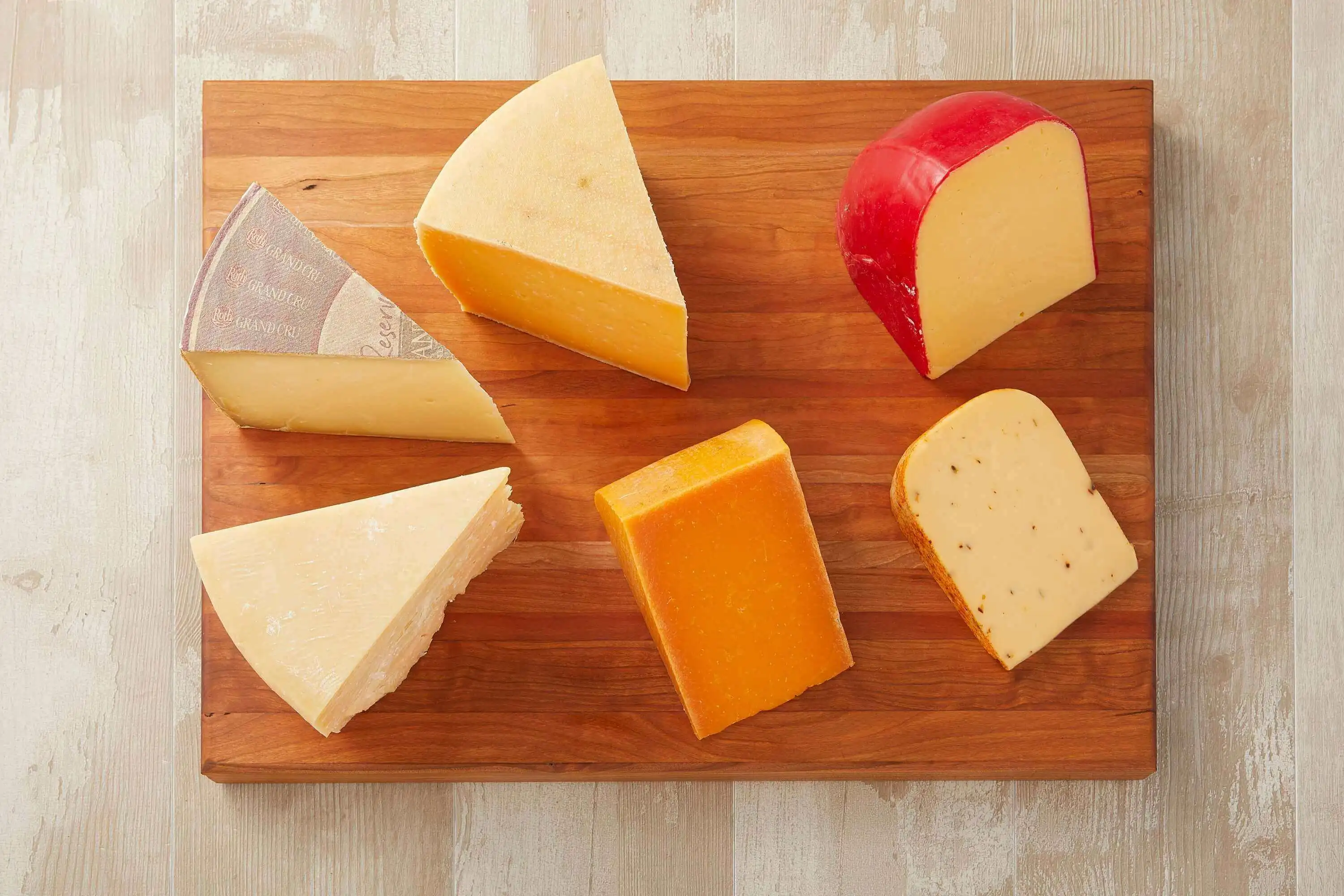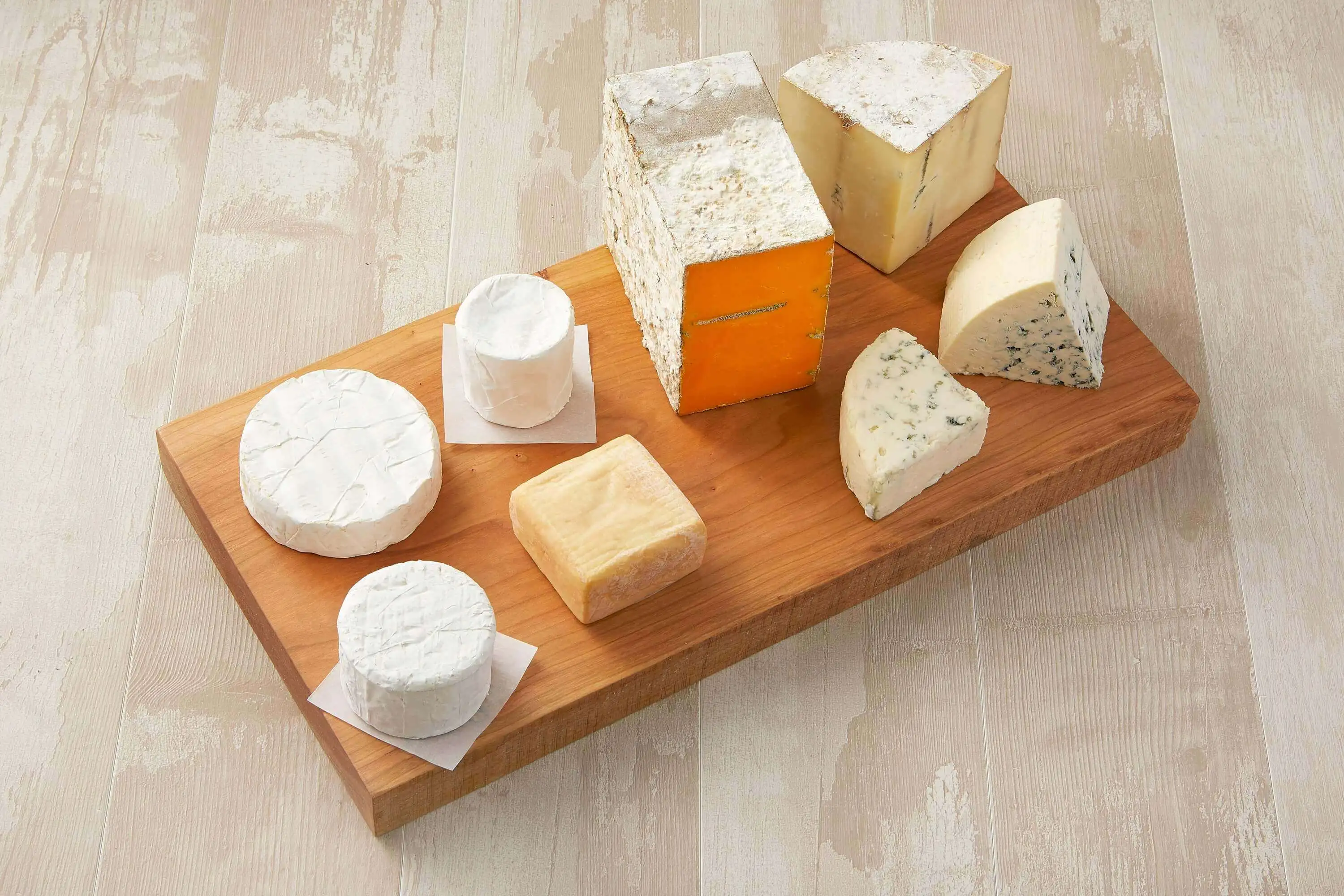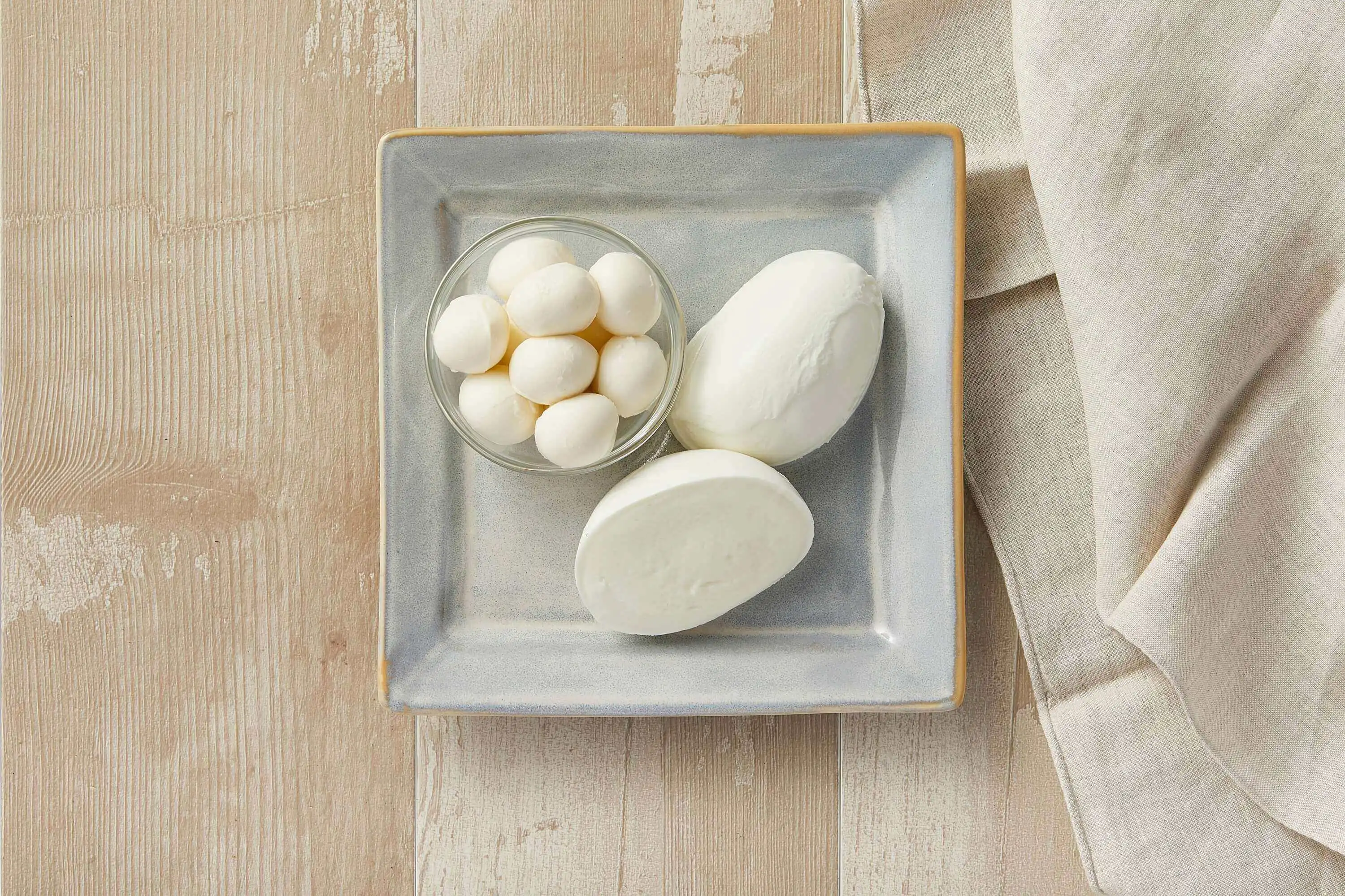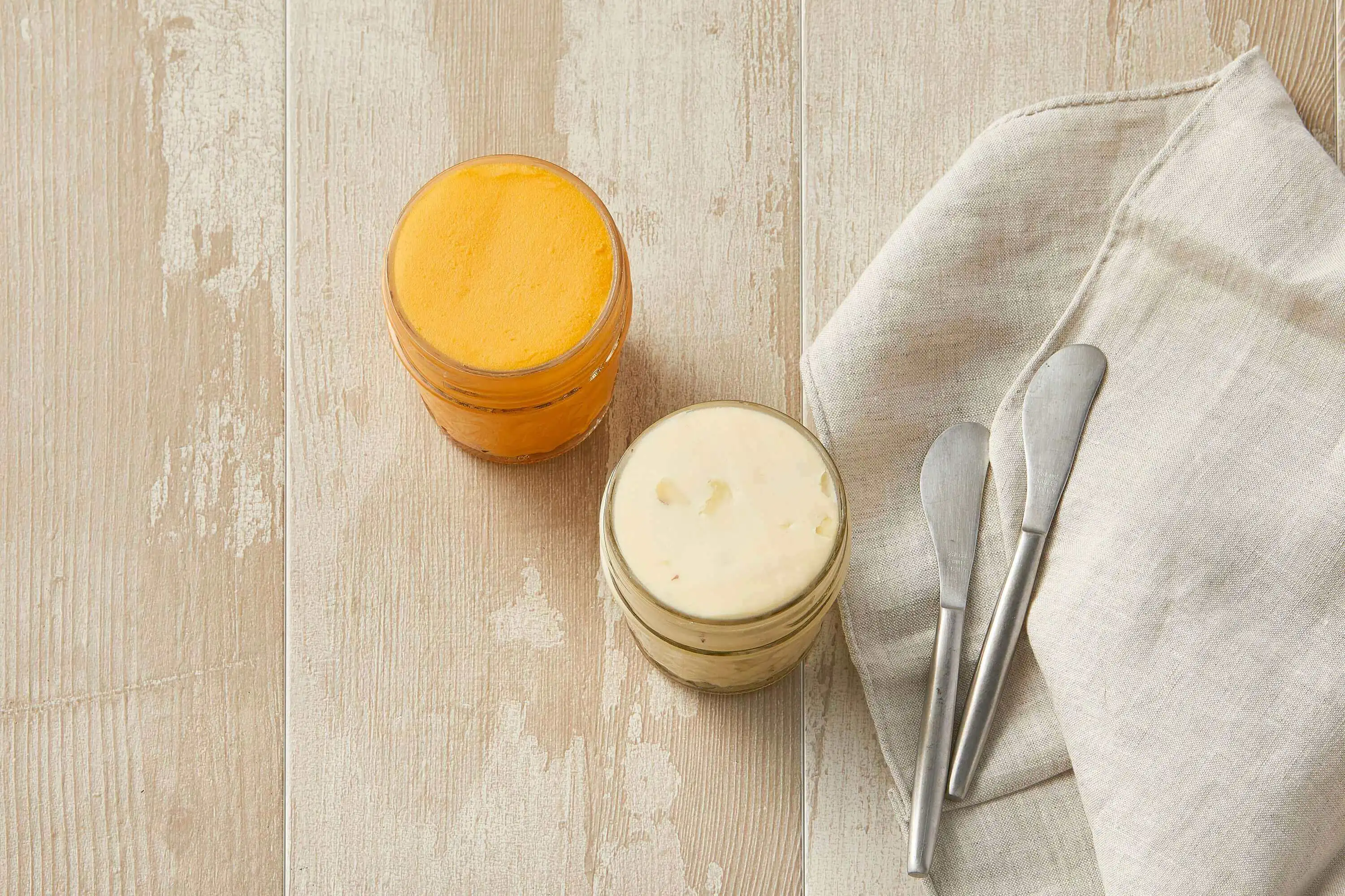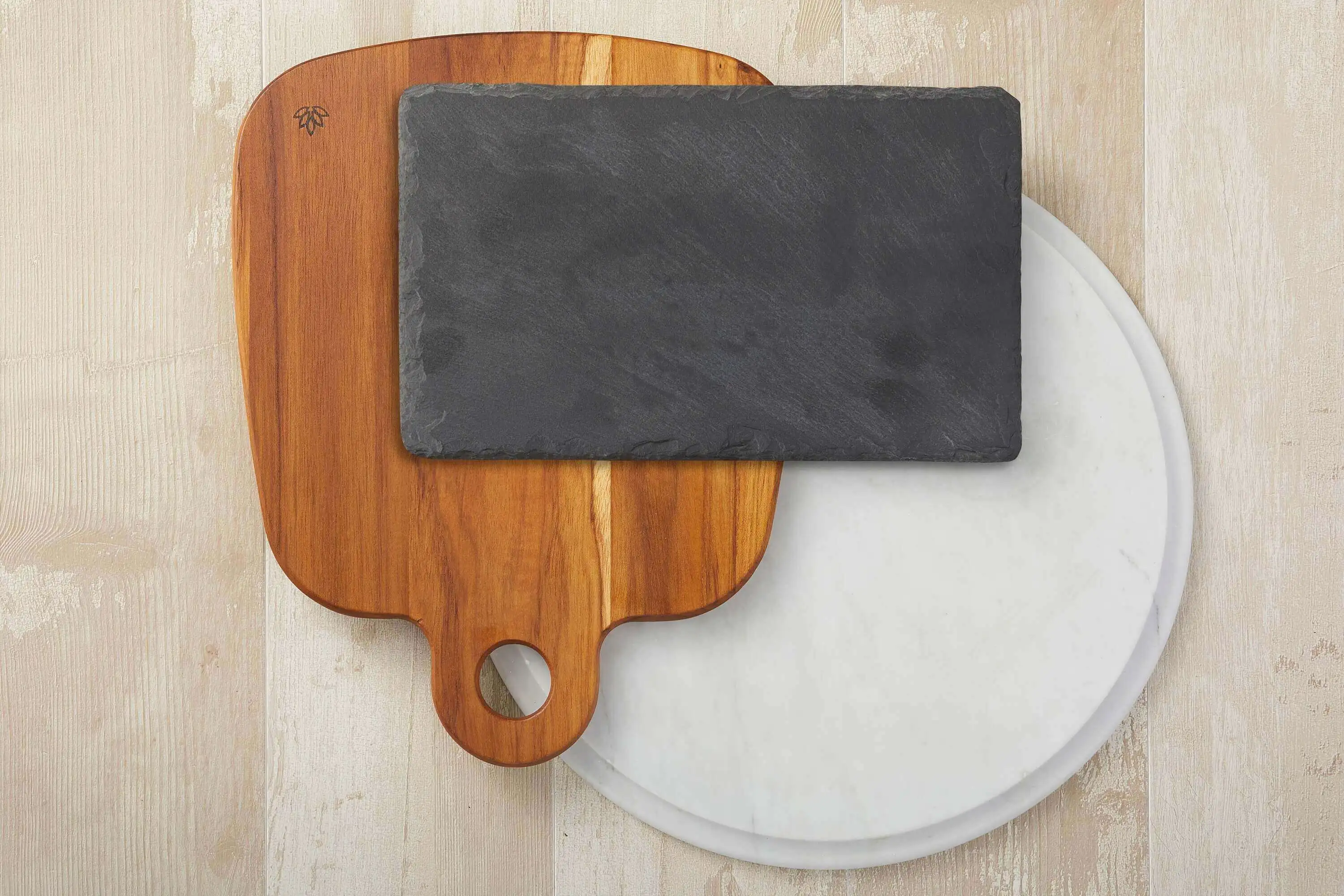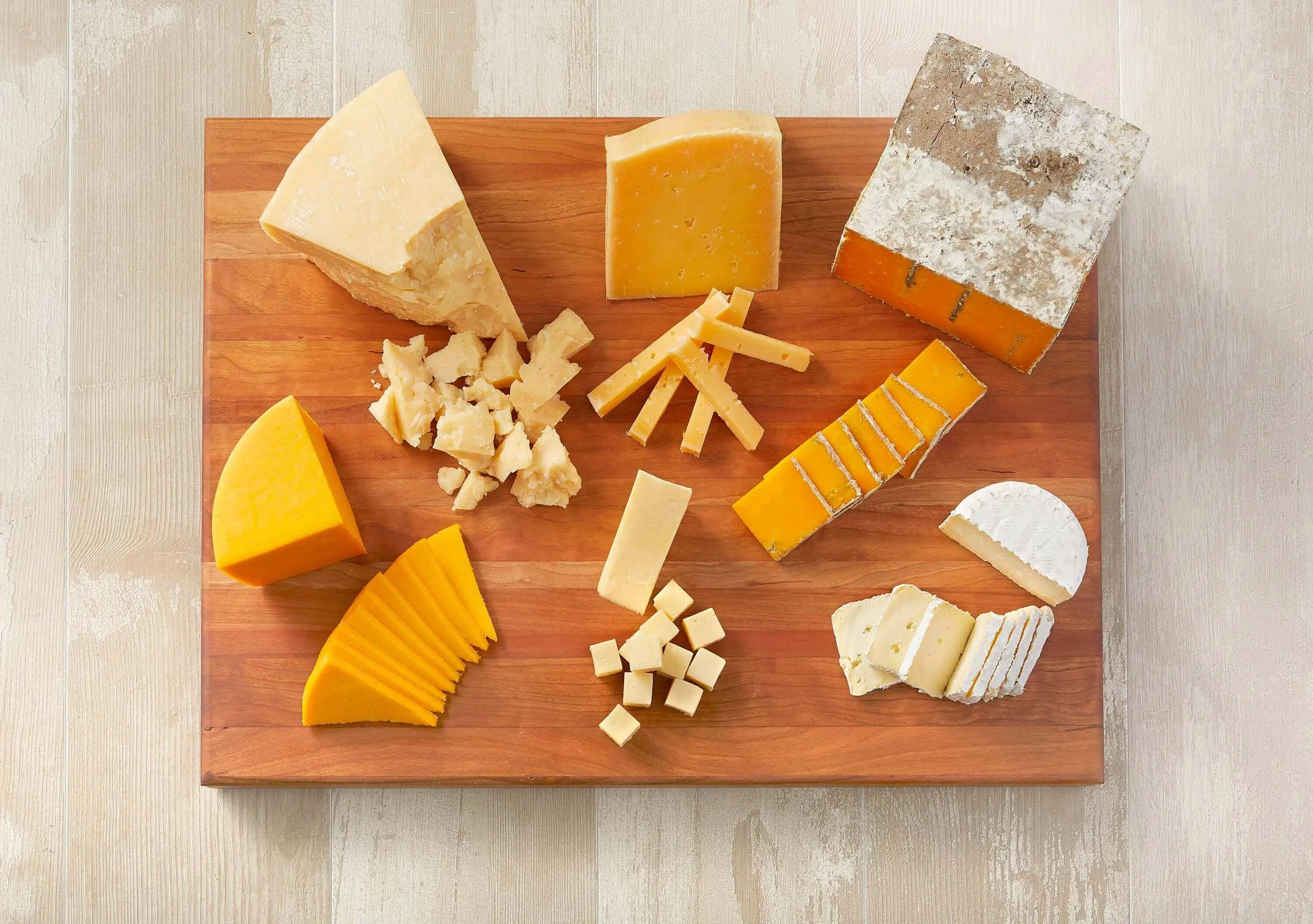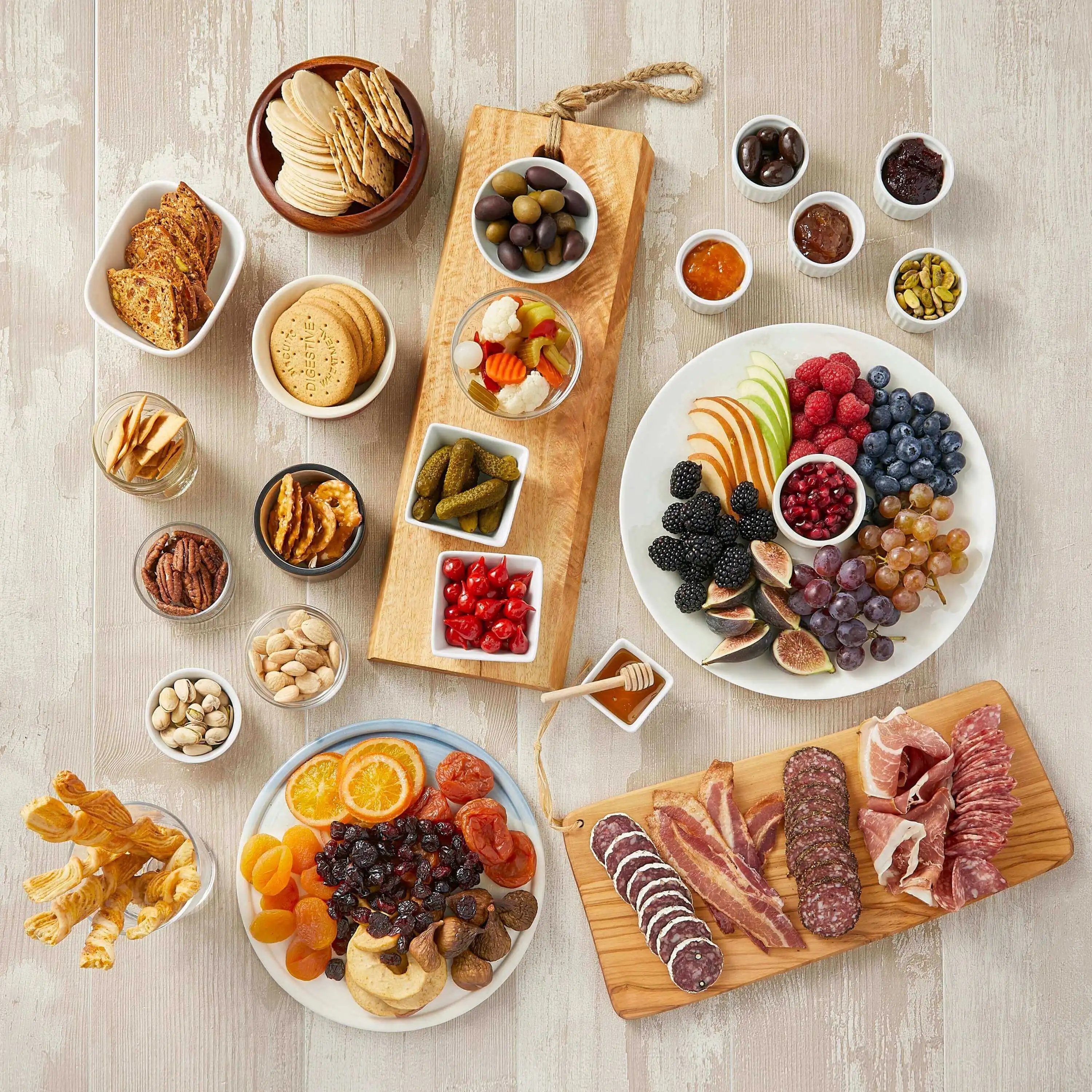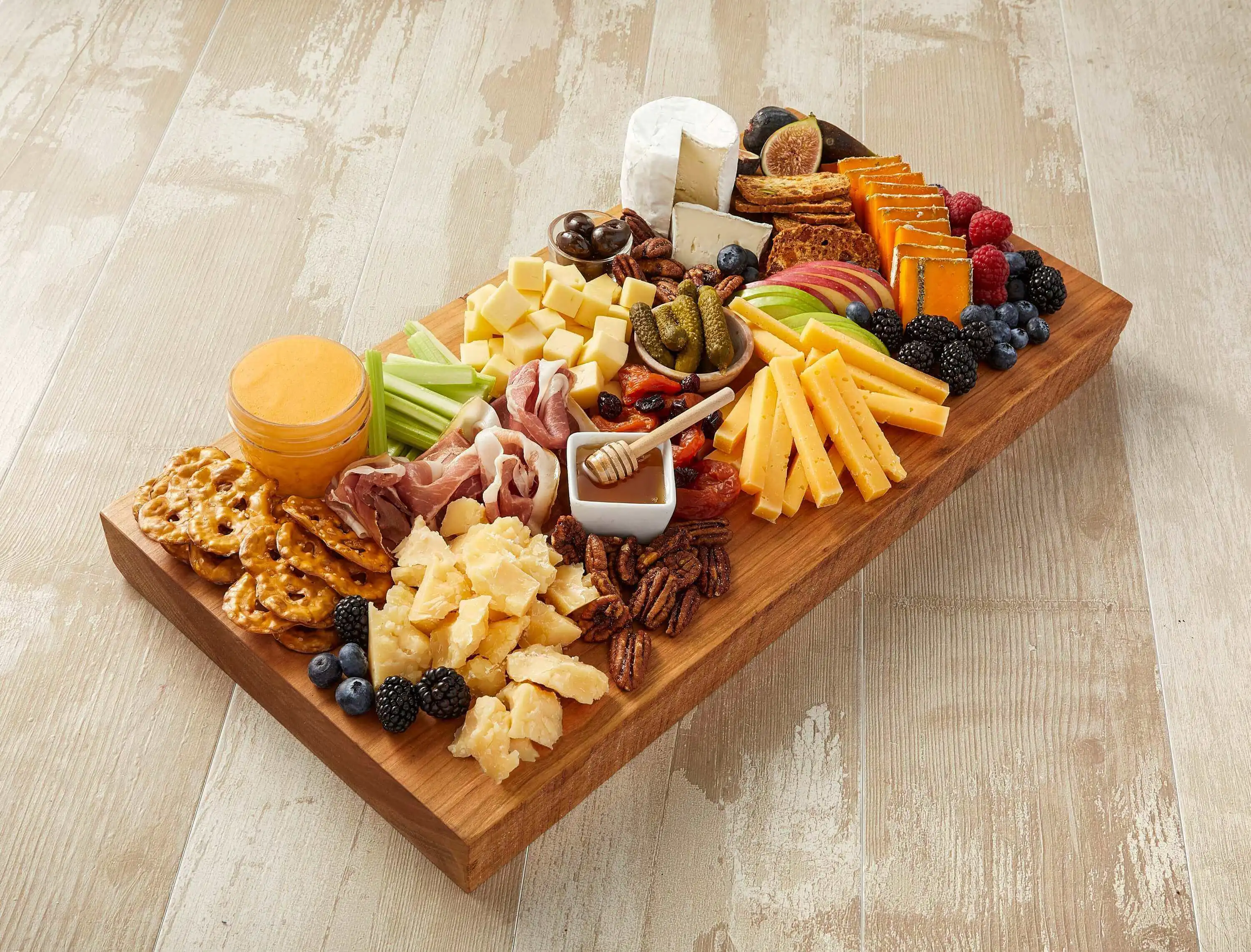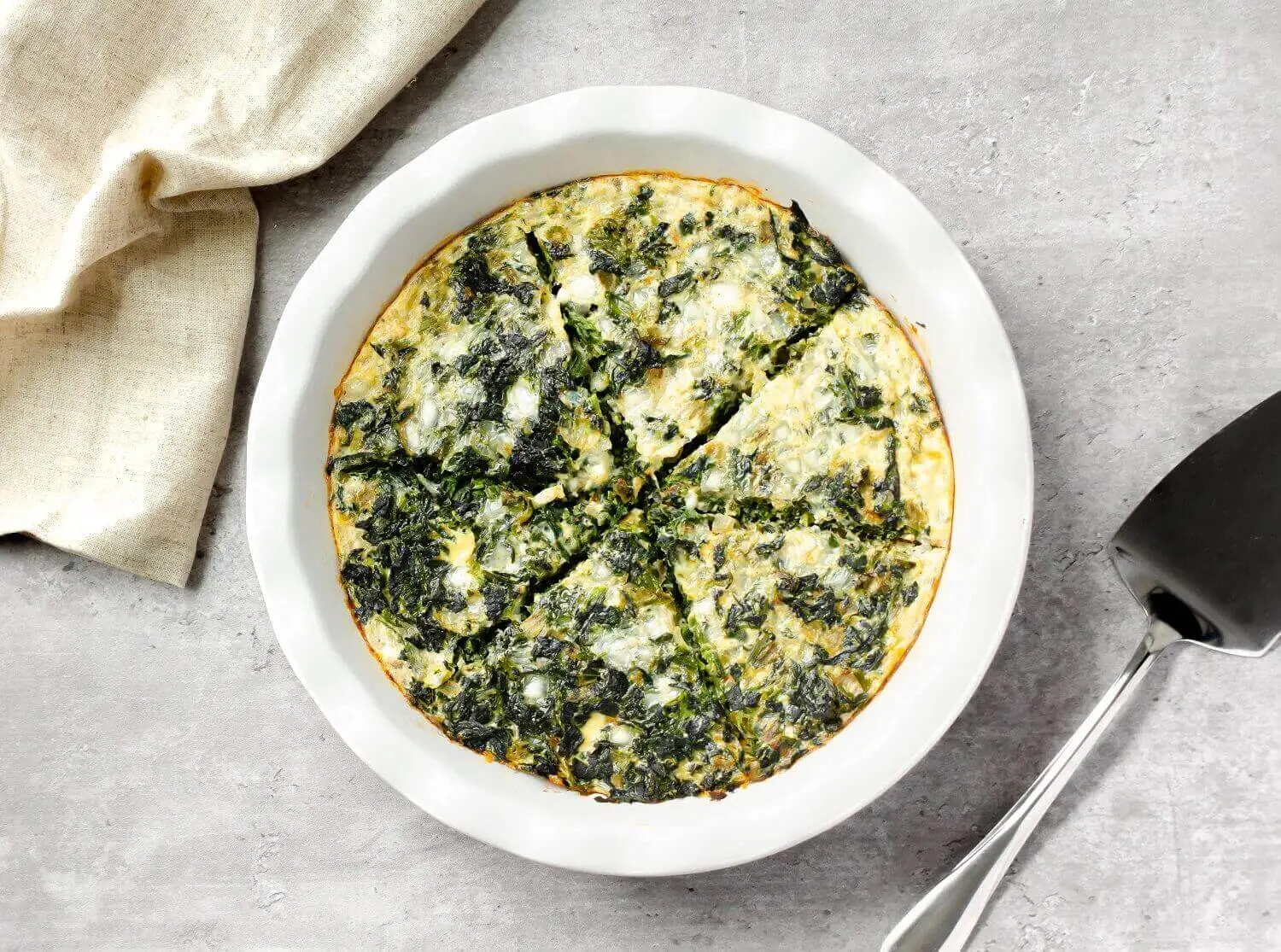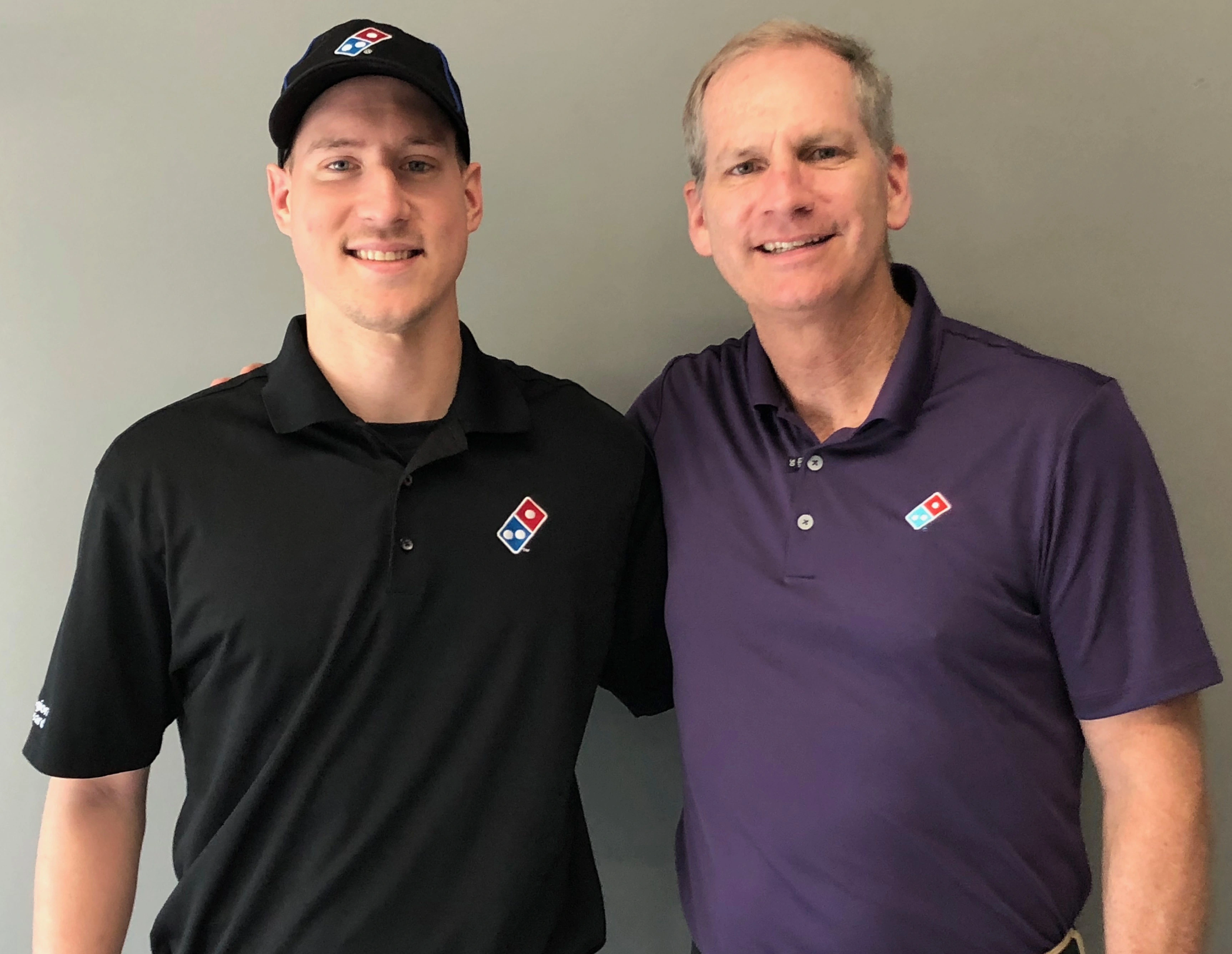The Ultimate Cheese Platter Guide
Do you want to make an epic cheeseboard? Or at least something eye-catching to share with your social followers—not to mention friends and family? If you are thinking about what to put on cheeseboards and charcuterie boards, here’s what I’ve learned so far.
First, planning is key—and I always start by planning my cheese. A little cheese knowledge goes a long way when it comes to making a memorable experience.
Choosing The Right Cheeses
When selecting cheeses, think about the roles each can play. (Of course, each cheese is a star in my mind!) Ensure the board has a variety of flavors by choosing a mild cheese, a more flavorful and robust cheese, and something a little intense or unusual and build from there.
Mild cheeses like Colby, Havarti or butterkase are great because they appeal to kids and adults and typically have a soft creamy texture and delicious milk and butter flavors.
More flavorful cheeses are typically the heart of my boards. They might be Cheddars, hard Italian cheeses like Parmesan, or an Alpine style like a Swiss cheese. Gouda is also a great choice. Each of these have their own unique but approachable flavor.
I like to round out the cheeses on the board with something unusual and intense to help broaden my guests’ horizons and excite the foodies. A cheese with a bloomy rind, like brie, works. Or you can select a creamy blue cheese for its tangy, pungent flavor.
Other popular options to consider are cheese spreads and pub cheese to compliment your favorite crackers. And fresh mozzarella is the perfect companion for vegetables.
Arranging Your Cheese Board
Once you’ve selected your cheese, it’s time to choose a board. You can get one large board or multiple small ones—be creative! I usually go with wood or marble.
As I get ready to prep everything for the board, I like to keep a few things in mind. First, to help keep things picture-perfect, I keep softer cheeses cold and let harder and crumblier cheeses warm up a bit. This will help keep the softer cheese from smearing or oozing while cutting, and it makes it easier to slice hard or crumbly cheeses.
I always work “off board” at a workstation to prepare everything. This workstation is usually my everyday cutting board and a sturdy kitchen knife. I like to stage the cheese, so I cut the white and mild cheeses first and end with the colorful and bold-flavored cheeses last to prevent color and flavor transfer.
I also like to think about how I will cut, slice or crumble the cheese and have a plan in mind before I start to prep and place. That means ensuring each cheese has its own unique shape—that will help you and your guests remember which is which. This is especially true if two cheeses look like each other when cut.
Soft and semi-soft cheeses slice and cube easily, while firm and hard cheeses are great in sticks, triangles, or even crumbled.
A tool I really like to use for soft or hard to slice cheeses is a cheese wire. It can help make even the trickiest-to-cut cheeses look great. If you don’t have a cheese wire, a great kitchen hack is to use unflavored dental floss to slice those soft cheeses.
Pair The Cheeses
There are so many choices for accompaniments because cheese pairs well with nearly anything. To narrow things down, I include something sweet, something salty, and something crunchy.
I have a few go-to foods like honey, bread or crackers, and nuts. Honey matches well with both mild and savory cheeses to highlight their flavors–try it on Havarti!
Bread and crackers are the workhorse because they go with any cheese. Nuts add a flavor that perfectly matches aged cheeses while bringing a crunchy texture.
Looking for something to wash it all down? Check out Discover New & Different Wine & Cheese Pairings: A Guide or even Seltzer And Cheese Pairing Ideas.
Some other options include olives or a small pickle for salty and tangy flavors. Cured meats, like genoa salami or prosciutto are standbys, but be creative – for example, crunchy fried bacon brings big flavor and texture. Dried fruits and berries or preserves are sweet alternatives that last in your pantry, look great on your cheese board, and they’re kid friendly.
One of my favorite items to place on the board is dark chocolate. It pairs so well with milder cheeses like butterkase or Havarti to play up the rich milky and chocolatey sensations.
Once I’ve selected my accompaniments, then place them next to a cheese to suggest a flavorful pairing. This makes things easier and more interesting for everyone. Examples include honey next to Parmesan, dark chocolate next to Havarti, or nuts near Gouda.
No matter the combination you offer, it’s a chance for friends and family to enjoy their own flavor designs with cheese!
